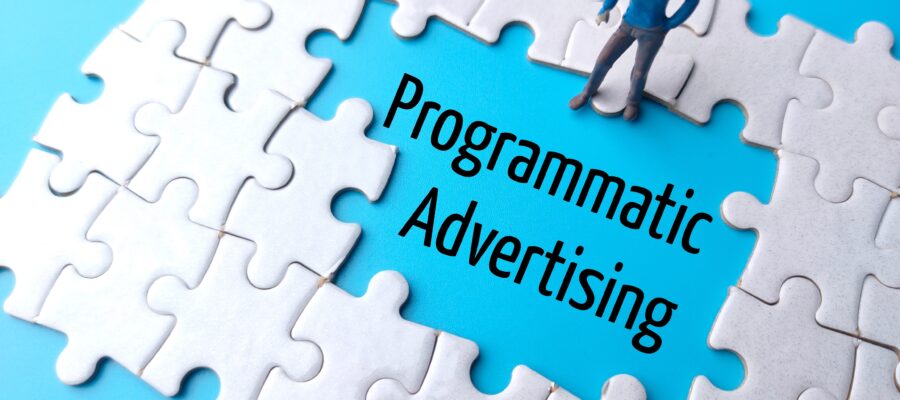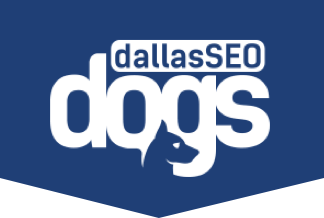How Does Programmatic Advertising Work?

As you know, reaching the right audience at the right moment is the end goal of all marketing. Gone are the days of solely relying on manual negotiations and placements for online ads.
Enter programmatic advertising, a term that buzzes around marketing meetings but often remains shrouded in a bit of mystery. It represents a seismic shift in how digital ad space is bought and sold, leveraging technology to automate the process with incredible speed and precision.
But what is programmatic advertising, really? And more importantly for marketing directors and business owners aiming for efficiency and impact, how does programmatic advertising work? Understanding this technology is no longer optional — it’s fundamental to crafting competitive digital strategies.
As a leading digital marketing company, we’re here to demystify programmatic advertising, explain its mechanics, explore its benefits and challenges, and show you how partnering with the right digital marketing agency can unlock its full potential for your business.
What Is Programmatic Advertising?
At its core, programmatic advertising uses software and algorithms to automate the buying, placement, and optimization of digital advertising in real-time. This replaces traditional human negotiation and insertion orders. Think of it like automating the stock market, but for ad impressions. Instead of lengthy back-and-forth discussions about placements and pricing, machines handle the transactions in milliseconds.
So what issue is Programmatic Advertising solving? It tackles the inefficiency and scalability issues of manual ad buying. In the traditional model, ad buyers would negotiate directly with publishers to place ads on specific websites. This process was slow, limited in scope, and often lacked precise targeting capabilities.
Programmatic Advertising flips this model.
It allows advertisers to bid on individual ad impressions across a vast network of websites, apps, and other digital properties, specifically targeting users based on data like demographics, Browse behavior, interests, location, and more. This technology isn’t just limited to banner ads; it encompasses video, mobile, native, social media, and even connected TV (CTV) advertising formats. It represents a smarter, data-driven approach to digital ad spending.
How Does Programmatic Advertising Work
Understanding how programmatic advertising works involves grasping the interaction between several key platforms operating behind the scenes at lightning speed.
Imagine a user visits a website or opens an app that displays ads. In the tiny fraction of a second it takes the page to load, a complex auction occurs. Here’s a simplified breakdown of the process, often referred to as Real-Time Bidding (RTB), which is the most common type of Programmatic Advertising:
- User Arrives: You click on a link and start loading a webpage with ad space available.
- Ad Request: The publisher’s website sends out a signal containing information about the available ad space and anonymized data about you (the visitor – perhaps your general location, device type, and Browse interests derived from cookies or other identifiers). This signal goes to a Supply-Side Platform (SSP).
- SSP and Ad Exchange: The SSP analyzes the request and makes this ad impression available on an Ad Exchange – a digital marketplace connecting publishers selling inventory with advertisers looking to buy it.
- DSP Analysis: On the other side, advertisers (or their digital marketing agency) use a Demand-Side Platform (DSP). The DSP receives the information about the available impression and the user profile from the Ad Exchange.
- Real-Time Bidding: The DSP checks this information against the advertiser’s campaign settings (target audience, budget, bid strategy). If the user profile matches the target criteria, the DSP automatically places a bid for that specific ad impression on the Ad Exchange. Multiple DSPs representing different advertisers might bid simultaneously.
- Auction Winner: The Ad Exchange instantly evaluates all bids. The highest bidder wins the auction.
- Ad Served: The winning advertiser’s ad creative is fetched by the Ad Exchange/SSP and delivered back to the user’s browser, displaying on the publisher’s webpage.
The incredible part? This entire auction process all happens in the roughly 100-200 milliseconds it takes for the webpage to load. Data Management Platforms (DMPs) also play a role by collecting, organizing, and activating large sets of audience data (first-party, second-party, and third-party) to inform targeting decisions within the DSP, making programmatic advertising even more precise.
Pros and Cons of Programmatic Advertising
Like any powerful technology, programmatic advertising comes with significant advantages but also potential drawbacks that need careful management.
Pros
- Efficiency: Automation drastically reduces the manual labor involved in ad buying, freeing up time for strategy and analysis.
- Reach and Scale: Access to a massive pool of ad inventory across millions of websites and apps globally.
- Precise Targeting: Sophisticated audience segmentation based on demographics, behavior, context, location, device, and more. Programmatic Advertising excels here.
- Real-Time Optimization: Campaigns can be monitored and adjusted instantly based on performance data to improve ROI.
- Potential Cost-Effectiveness: The auction environment can lead to efficient pricing based on the true market value of an impression.
Cons
- Complexity: The ecosystem involves multiple platforms (DSPs, SSPs, DMPs, Ad Exchanges) and requires expertise to navigate effectively. This is where a skilled Digital Marketing Company becomes invaluable.
- Brand Safety: Risk of ads appearing on inappropriate or low-quality websites or content if safeguards aren’t implemented properly.
- Ad Fraud: Potential exposure to non-human traffic (bots) generating fake impressions or clicks, wasting ad spend. Mitigation requires constant vigilance.
- Transparency Concerns: Sometimes it can be challenging to know exactly where ads are running or the breakdown of media costs versus tech fees (though transparency is improving).
Managing these cons is a key function of a proficient marketing agency.
Get Started With Programmatic Advertising
Ready to harness the power of Programmatic Advertising? Success starts with a clear strategy and often requires expert guidance. Here’s how to approach it:
- Clear Objectives: What do you want to achieve? Brand awareness? Lead generation? Sales? Your goals dictate your campaign setup, targeting, and key performance indicators (KPIs).
- Target Audience: Who are you trying to reach? Develop detailed audience personas based on demographics, interests, online behavior, and purchase intent. Leverage first-party data if available.
- Realistic Budget: Programmatic Advertising can work with various budgets, but understand that testing and optimization require investment.
- Choose Your Tech (or Partner): You can manage campaigns via self-serve DSPs, but this requires significant expertise. Alternatively, partnering with an experienced Digital Marketing Agency like Dallas SEO Dogs simplifies the process immensely.
- Compelling Creative: Your ads need to capture attention and drive action. Test different formats (display, video, native) and messaging.
- Monitor and Optimize: Programmatic Advertising is not “set it and forget it.” Continuous monitoring of performance data and making data-driven adjustments is crucial for maximizing ROI.
As a dedicated Digital Marketing Company based in Dallas, we specialize in helping businesses navigate the complexities of Programmatic Advertising. Our team leverages industry-leading platforms and data insights to build, manage, and optimize campaigns that deliver measurable results. We handle the technical intricacies, provide transparent reporting, and focus on achieving your specific marketing objectives, allowing you to reap the benefits without getting lost in the jargon.
The Automated Future of Ads
Programmatic advertising has fundamentally reshaped the digital advertising landscape, offering unprecedented efficiency, reach, and targeting capabilities. Understanding how does programmatic advertising work reveals a sophisticated ecosystem driven by data and automation, enabling businesses to connect with their ideal customers more effectively than ever before. While challenges like brand safety and transparency exist, the advantages are undeniable when campaigns are managed strategically. Embracing Programmatic Advertising is key to staying competitive in the modern marketing arena.
Ready to leverage the power of programmatic advertising for your Dallas business? Stop guessing and start getting results! Partner with Dallas SEO Dogs, your expert digital marketing agency, for comprehensive programmatic advertising management services designed to maximize your reach, engagement and ROI. Reach out today for a consultation and let our Digital Marketing Company craft a winning strategy for you!
